Nightstands are an essential piece of furniture in a bedroom, providing functionality and aesthetics. These handy bedside tables serve as a convenient surface for placing a lamp, alarm clock, or personal items, and they also contribute to the overall design and balance of the room. However, determining the number of nightstands to have in a bedroom can be a subjective decision based on various factors. In this article, we will explore the importance of bedstands, considerations for choosing their size and layout, practical placement tips, alternative options, and their integration into different bedroom styles.
Why Are Nightstands Important In A Bedroom?
Nightstands serve multiple purposes and play a crucial role in bedroom design. Firstly, they offer a convenient surface next to the bed, allowing easy access to essentials such as reading materials, glasses, or a glass of water. Moreover, they provide a place to keep personal items within reach, reducing clutter and promoting organization. Additionally, bedstands can enhance the overall aesthetics of the bedroom by complementing the bed and other furniture, adding balance, symmetry, and personal style to the space.
Determining The Size And Layout Of The Bedroom

When deciding on the number of bedstands for a bedroom, it’s important to consider the size and layout of the room. Assessing the available space will help determine whether one or two nightstands would be appropriate. A larger bedroom with ample floor space can accommodate two bedstands, while a smaller room may benefit from a single nightstand or alternative options discussed later in the article.
Considering The Bed Size And Configuration
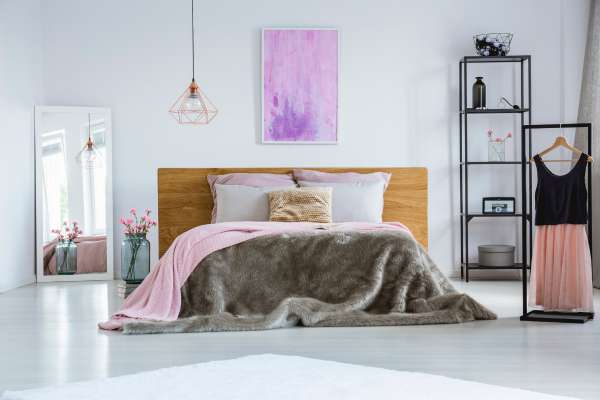
The size and configuration of the bed also influence the number of bedstands. In a room with a single bed, one nightstand placed on either side can create a symmetrical and balanced look. For larger beds, such as queen or king-size, having two nightstands is generally recommended to maintain symmetry and provide equal functionality for both sides of the bed. However, in some cases, a single nightstand or alternative arrangements may still work well, depending on personal preference and the available space.
Symmetry And Balance In Bedroom Design
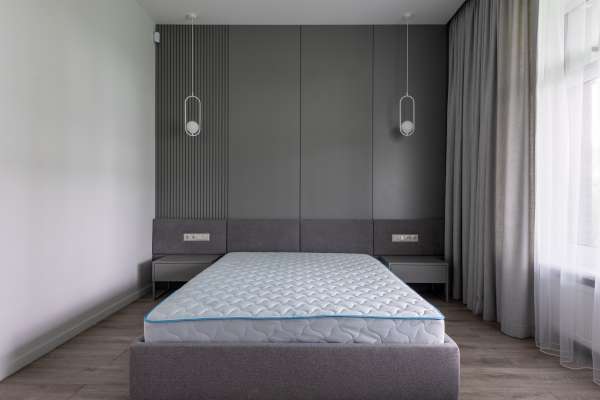
Symmetry and balance are often desired in bedroom design as they create a visually pleasing and harmonious atmosphere. Placing matching nightstands on either side of the bed is a common approach to achieve this. It provides a sense of equilibrium and creates a cohesive look. However, if you prefer a more eclectic or asymmetrical style, mixing and matching different bedstands can be a creative and unique choice.
Practical Considerations For Nightstand Placement
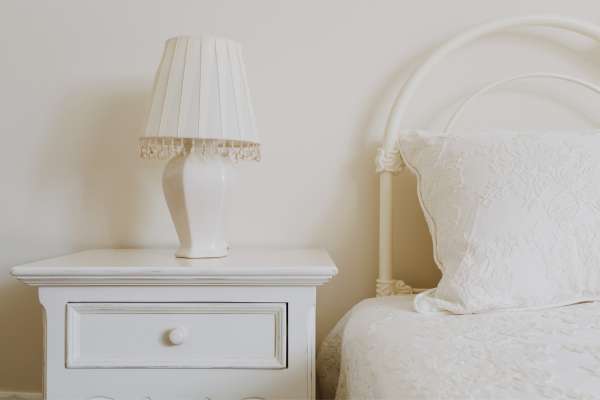
Practicality should be a key consideration when placing bedstands. They should be easily accessible from the bed and proportional in size to the bed and the room. Leave enough space between the nightstand and the bed for comfortable movement and easy access to drawers or shelves. It’s also important to ensure that the nightstand’s height matches the height of the mattress to maintain a seamless and functional bedside setup.
Maximizing Storage With Multiple Nightstands

Having two nightstands allows for increased storage options in the bedroom. Each nightstand can feature drawers, shelves, or cabinets to store personal items, books, or bedside essentials. This can be particularly beneficial for couples who may have different storage needs or prefer to keep their personal items separate.
Alternative Options To Traditional Nightstands
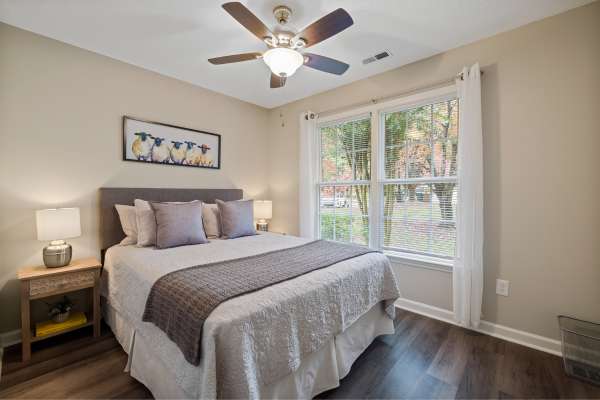
While traditional bedstands are commonly used, there are alternative options available to suit different preferences and room layouts. Wall-mounted shelves or floating bedside tables can be a space-saving and modern alternative, especially in small bedrooms. Additionally, repurposing furniture like small dressers, vintage trunks, or stools can add character and uniqueness to the room.
Adding Personal Touches To Nightstands

Nightstands offer an opportunity to showcase personal style and add decorative elements to the bedroom. Consider incorporating items such as a favorite book or a small potted plant to add a personal touch to your nightstand. A decorative lamp can also serve as both a functional and aesthetic element, providing ambient lighting and complementing the overall bedroom decor. Additionally, you can display family photos, artwork, or meaningful objects that hold sentimental value. These personal touches not only make the nightstand visually appealing but also create a sense of comfort and familiarity in the bedroom.
Maintaining A Clutter-Free Nightstand

To fully enjoy the benefits of a nightstand, it’s essential to keep it clutter-free and organized. Use the drawers or shelves to store items that are frequently used but may create visual clutter. Keep the surface of the nightstand clean and clear, only displaying a few carefully selected items to maintain a sense of simplicity and tranquility. Regularly declutter and reevaluate the items on your nightstand to ensure it remains a functional and serene space
Incorporating Nightstands Into Different Bedroom Styles

Nightstands can be seamlessly integrated into various bedroom styles, enhancing the overall aesthetic. For a contemporary or minimalist bedroom, choose sleek, clean-lined bedstands with minimal ornamentation. In a traditional or classic bedroom, opt for nightstands that feature intricate detailing or antique finishes. In rustic or farmhouse-inspired bedrooms, consider using reclaimed wood or vintage crates as unique nightstand options. By selecting bedstands that align with the overall style of the room, you can create a cohesive and visually appealing space.
Mixing And Matching Nightstands
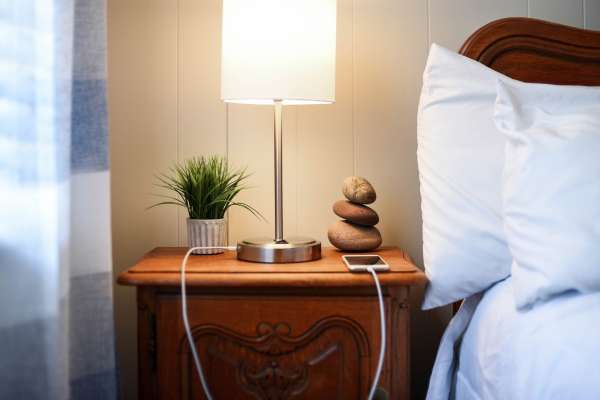
While matching nightstands provide a sense of symmetry, mixing and matching different bedstands can create an eclectic and dynamic look. Experiment with different materials, shapes, or colors to add visual interest to the room. For example, pairing a wooden nightstand with a metal or glass one can create a captivating contrast. Just ensure that the nightstands share some common elements, such as similar heights or complementary styles, to maintain a cohesive design.
Nightstands In Small Bedrooms

In smaller bedrooms where space is limited, it may not be practical or visually pleasing to have two nightstands. In such cases, consider using a single nightstand on one side of the bed or explore alternative options like wall-mounted shelves or hanging organizers. These alternatives provide functionality while minimizing the footprint and creating a more open feel in the room. Remember to prioritize functionality and flow when selecting bandstands for smaller bedrooms.
Nightstands In Large Bedrooms
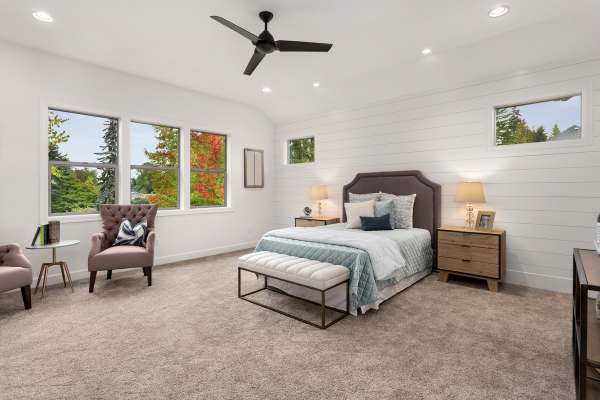
In larger bedrooms, having two bedstands can enhance the sense of balance and proportion. Place identical nightstands on either side of the bed to create a symmetrical look that fills the space. If the room is exceptionally spacious, you can even experiment with larger nightstands or consider incorporating additional furniture pieces, such as a small desk or a cozy seating area, to further enhance the functionality and aesthetics of the room.
Nightstand Alternatives For Unconventional Spaces
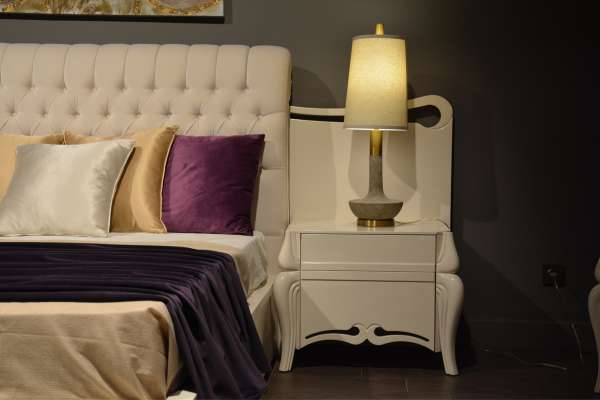
In some cases, the bedroom layout or unconventional room design may not allow for traditional bedstands. In such situations, think outside the box and explore alternative options. For example, you can use a small side table, a stack of books with a tray on top, or a hanging bedside caddy attached to the bed frame. These creative alternatives can serve the same purpose as nightstands while adding a unique and personalized touch to the room.
The Final Thoughts
Nightstands play a vital role in the functionality, organization, and aesthetics of a bedroom. The number of nightstands to have in a bedroom. It depends on factors such as the room size, bed configuration, personal preference, and available space. Whether you opt for a symmetrical arrangement with matching bedstands. Choose to mix and match different styles, the key is to create a cohesive and balanced look. Remember to prioritize practicality, incorporate personal touches, and keep the nightstand clutter-free to fully enjoy its benefits. With careful consideration and thoughtful placement, bedstands can elevate the overall design. And the functionality of your bedroom, creating a space that is both visually pleasing and practical.
